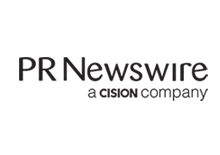Global Optical Fiber Cable Market 2023: Rising Internet Usage Bolsters Growth - ResearchAndMarkets.com
The "Global Optical Fiber Cable Market Overview, 2023-28" report has been added to ResearchAndMarkets.com's offering.
The global optical fiber cable market is expected to reach USD more than 13 Billion by 2028 with a significant CAGR of 13.02 % from USD 6.3 Billion in 2022.
Globally, the market for optical fibre cables will expand rapidly. Because of the growing need for scalable, quick, and dependable communication infrastructure networks, optical fibre is now widely used. It is 10 times faster and can transport much more data than copper wires of the same diameter.
For instance, the FTTH deployments from AT&T Fibre and Version Fios allow for super-fast file transfers and 4K video streaming. Among other forthcoming technologies, the Internet of Things (IoT) and 5G are projected to be fueled by characteristics like the high-bandwidth connectivity of optical fibre.
The optical fibre cable market is also significantly influenced by 5G networks. One important feature that can be used to harden the Internet is the ability to use fibre connectivity, which could be a major factor propelling the market for optical fibre cable globally. The market for optical fibre cables has been significantly influenced by the rising need for higher bandwidth caused by the increased use of data-intensive applications, including video streaming, cloud computing, online gaming, and social media.
Compared to conventional copper cables, optical fibres can carry data at significantly higher rates and over greater distances, making them crucial for supplying the expanding bandwidth needs.
Furthermore, the need for optical fibre cables has been greatly boosted by the global rise in internet adoption, particularly in emerging nations. The demand for dependable and fast connectivity grows as more people access the internet and engage in the digital economy. Optical fibre cables allow for reliable and efficient data transfer, aiding digitalization initiatives in numerous industries.
Government spending on building telecommunications infrastructure is increasing, hastening industry expansion. The government is investing in research to broaden and improve the capabilities of soliciting. The public's increased awareness of technology's benefits also helps the market grow.
Rising internet usage will be a key factor in the market's expansion over the course of the projected period. The increasing need for fibre optic cable, which is used in telecommunications services like the internet, television, and telephones, is another factor affecting the market's revenue growth.
Fibre optics make it feasible to network data over long distances and at great speeds. The fact that fibre optic cable is unaffected by changes in temperature, inclement weather, or moisture is another factor driving the market's rise. Consumer demand for better speeds is another factor boosting the fibre optic cable industry's expansion. With fibre-optic access, internet speeds can surge to an incredible 100 Gbps. Because they prevent internet slowdowns during times of heavy demand for internet access, these faster speeds are essential.
Consumers may anticipate higher VoIP voice quality, quicker data transfers to the cloud, and faster download speeds as a result of the increase in demand for fibre optic connection. As more nations invest in fibre-to-the-home (FTTH) infrastructure, more residential customers will have access to fast internet. This trend was sparked by the necessity to accommodate bandwidth-hungry apps and the need for better internet connections.
Higher data transfer rates, greater transmission lengths, and improved dependability were made possible by technological improvements in fibre optic technology. For instance, dense wavelenglongersion multiplexing (DWDM) enabled the simultaneous transmission of many wavelengths across a single fibre, hence improving the overall capacity. Additionally, installing and deploying optical fibre cables in varied situations became simpler with the invention of bend-insensitive fibres.
The largest market for optical fibre cable worldwide is Asia-Pacific, followed by North America. Recent years have seen strong economic growth in the Asia-Pacific area, which has increased spending on telecommunications infrastructure. Rising disposable incomes, an escalating middle-class population, and the expansion of numerous businesses have all contributed to this increase.
Companies mentioned in the report:
Nexans S.A., Prysmian S.p.A., Furukawa Electric Co., Ltd., Fujikura Ltd., Belden Incorporated, CommScope Holding Company, Inc, Hengtong Group, Sumitomo Electric Industries, Ltd., Corning Incorporated, Te Connectivity.
Considered in this report
- Geography: Global
- Historic year: 2017
- Base year: 2022
- Estimated year: 2023
- Forecast year: 2028
Aspects covered in this report
- Global Optical Fiber Cable market with its value and forecast along with its segments
- Region-wise Optical Fiber Cable market analysis
- Various drivers and challenges
- On-going trends and developments
- Top profiled companies
- Strategic recommendation
Regions covered in the report:
- North America
- Europe
- Asia-Pacific
- South America
- Middle East & Africa
By Cable Type:
- Single Mode
- Multi-Mode
By Installation Type:
- Overhead
- Underground
- Submarine
By End-User:
- Power Infrastructure (Energy, Power Transmission and Distribution)
- IT & Telecommunication
- Building & Construction (Commercial and Residential)
- Aerospace & Defence
- Consumer Electronics
- Automotive (Passenger, Commercial and Utility Vehicles)
- Others (Oil & Gas Industry, Industrial Machinery and Manufacturing, Medical Equipment, Logistics, etc.)
For more information about this report visit https://www.researchandmarkets.com/r/ww0w00
About ResearchAndMarkets.com
ResearchAndMarkets.com is the world's leading source for international market research reports and market data. We provide you with the latest data on international and regional markets, key industries, the top companies, new products and the latest trends.
View source version on businesswire.com: https://www.businesswire.com/news/home/20230626905209/en/



